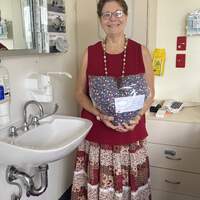Radiation Associated Heart Valve Disease: What Should Patients Know?
Written By: Adam Pick, Patient Advocate, Author & Website Founder
Medical Expert: Douglas Johnston, MD, Chief of Cardiac Surgery at Northwestern Medicine
Page last updated: August 2, 2023
Cancer treatments for conditions including Hodgkin’s disease are often regarded as “medical miracles”. However, patients are often unaware that radiation therapy can negatively impact the functioning of organs including the heart, the lungs and the esophagus. Specific to cardiac function, there is a strong association among radiation therapy and heart valve disease, coronary artery disorders, ascending aorta defects and pericardium issues.
To help you learn more about the association between radiation therapy and heart valve disease, I interviewed Dr. Doug Johnston, Chief of Cardiac Surgery at Northwestern Medicine in Chicago, Illinois. During his extraordinary career, Dr. Johnston has performed over 3,000 heart valve repair and replacement procedures.
Key Learnings About Radiation Therapy & Heart Valve Disease
Here are the key learnings shared by Dr. Johnston about radiation therapy and heart valve disease:
- Cancer treatments using radiation therapy have been very successful for the treatment of various types of conditions including Hodgkin’s disease. “It’s a medical miracle,” states Dr. Johnston. “So many people are living, surviving after these cancers.”
- How, radiation therapy may have “late effects” on organs within the chest cavity including the heart, the lungs and the esophagus.
- Specific to heart valves, radiation therapy may cause the heart valve leaflet to experience tissue fibrosis, a thickening of the valve leaflets that impacts the opening and closing of the heart valves. “Radiation causes fibrosis in tissue. How that manifests over time is often a slow thickening of these tissues,” states Dr. Johnston. “Typically, what we see initially is thickening and reduced mobility of the leaflets. This can be, in particular, the aortic and mitral valves.”
- The impact of radiation therapy on heart valves is not predictable.
- Over time, calcium can form on multiple valves and in the ascending aorta. Furthermore, calcium can build-up between the aortic and mitral valve which may require a complex surgery. “In the most typical fashion, it [calcium] forms between the two valves, what we call the aorta-mitral curtain, and this is what makes it such a surgical challenge and why we need to approach this disease differently than we would other kinds of heart valve disease.”
- Surgical treatments for radiation associated heart valve disease can be very successful. In addition, transcatheter techniques may be used to treat radiation associated heart valve disease (e.g. TAVR).
- Dr. Johnston may use the “Commando Operation” to treat the aortic and mitral valves which are defective due to radiation. “That’s the Commando operation, which involves replacing the calcium between the two valves,” states Dr. Johnston. “[It] sounds like a big operation and it is. But the outcomes are actually quite good. Most of these patients can live for a very long time and have a good quality of life after even a very extensive operation.”
- According to Dr. Johnston, it is important for patients with heart valve disease from radiation to realize that they are unique. “You and similar patients are unique from other valve disease patients, and you as an individual are going to have a unique presentation within the heart,” states Dr. Johnston. “The key consideration for patients is that this really requires a team of experts to figure out exactly what’s going on with your heart.”
- To help Dr. Johnston and his team determine therapeutic approaches for their patients, Dr. Johnston requires patients to get an echocardiogram, an MRI, a CT scan and, at times, a left and right heart catheterization. “The key consideration is timing,” states Dr. Johnston. “When does something need to be done? When will we be improving the long-term outcome by doing something now? That’s a joint conversation between us and the patient. It’s a hard to make a decision, and that decision’s never made on just an echo alone.”
Patient Question Regarding Radiation Location
After watching the video above, we received an interesting patient question from Doug, who asked, “Was the video referring to radiation strictly of the chest area or is there evidence of targeted radiation on other parts of the body causing valve disease? I had radiation treatment for Non-Hodgkin’s lymphoma in my jaw in 2019. About two years later, my echocardiograms started to show worsening mitral valve regurgitation. It went from zero to mild regurgitation for 20 years before radiation to moderate and then severe regurgitation afterwards. I ended up having a successful minimally-invasive robotic mitral valve repair last January. Very curious if the valve disease may have worsened due to radiation or was it simply age related deterioration.”
In his response to Doug’s question, Dr. Johnston stated, “Radiation heart disease is directly related to the amount of radiation received by the heart. In some cases, radiation for neck tumors extends into the chest and can affect the heart, but rarely. The way mitral valve disease progresses is very different from patient-to-patient. So, it is hard to know what caused the progression in your case. Very happy to hear about your successful repair!”
Many Thanks Dr. Johnston & Northwestern Medicine
Many thanks to Dr. Johnston for taking the time to educate our patient community about radiation associated heart valve disease. We also want to thank the entire Northwestern Medicine team for taking such great care of patients from the HeartValveSurgery.com community!
Related Links:
- Surgeon Q&A Follow-Up: 3 Patient Questions About Radiation Associated Heart Valve Disease
- See Dr. Johnston’s Interactive Surgeon Profile
- Explore the Northwestern Medicine Heart Valve Microsite
Keep on tickin!
Adam
P.S. For the deaf and hard of hearing members of our community, I have provided a written transcript of my interview with Dr. Johnston below.
Video Transcript:
Adam Pick: Hi, everybody. It’s Adam with HeartValveSurgery.com, and this is a special Surgeon Question & Answer session all about Radiation Associated Heart Valve Disease. I am thrilled to be joined by Dr. Douglas Johnston, who’s the Chief of Cardiac Surgery at Northwestern Medicine in Chicago, Illinois. During his extraordinary career, Dr. Johnston has performed over 4,000 cardiac procedures with more than 3,000 involving some form of heart valve repair or heart valve replacement. Dr. Johnston, it is great to see you again, and thanks for being with us today.
Dr. Johnston: Hey, Adam, great to see you. It’s great to be here and be here with the HeartValveSurgery.com community.
Adam Pick: Yeah, Dr. Johnston, given your research in this very important topic, I want to start with the question of what is the association between radiation therapy and heart valve disease?
Dr. Johnston: It’s a great question. Because the answer there is one that a lot of cardiologists don’t think about on a regular basis, many physicians are completely unaware of, and a lot of patients haven’t really been told. The treatment for conditions like Hodgkin’s disease with radiation to the chest has been incredibly successful. It’s a medical miracle. So many people are living, surviving after these cancers. What many weren’t told when they were initially treated is that the late effects of radiation can affect anything inside the chest cavity so the heart, the lungs, the esophagus. Because we’re talking about heart disease today, what we’re thinking about really is valves, heart muscle, coronary arteries, ascending aorta, and the pericardium. Any combination of those can be affected by radiation, and every patient is different.
Adam Pick: Dr. Johnston, very helpful. Let’s dive a little deeper specific to the valves. How does radiation impact the function of heart valves?
Dr. Johnston: Radiation causes fibrosis in tissue, and how that manifests over time is often a slow thickening of these tissues. For whatever reason, while it does impact the heart muscle to some extent, it impacts the fibrous tissues of the heart to a greater extent, and so typically, what we see initially is thickening and reduced mobility of the leaflets. This can be, in particular, the aortic and mitral valve. Not necessarily predictably from one patient to the next. It can be both or one or the other. Then late what we see is the formation of calcium, and that can be very intense in the ascending aorta, in the aortic and mitral valves. In the most typical fashion, it forms between those two valves, what we call the aorta-mitral curtain, and this is what makes it such a surgical challenge and why we need to approach this disease differently than we would other kinds of heart valve disease.
Adam Pick: Dr. Johnston, let’s talk a little bit more about the surgical challenge you just mentioned. Are treatments successful for radiation associated cardiac valve disease, and are outcomes different for different valves?
Dr. Johnston: It’s a great question. The answer to that is a resounding yes. I think it all depends on the strategy that’s employed when we first see a patient with this disease. This is really all about the lifetime management of valve disease, which is a principle we apply across all valve disease, but it’s so important in radiation patients and, in particular, because reoperations in radiated hearts are, for reasons we don’t understand very well, much more challenging and the outcomes aren’t as good. If we’re going to do a surgical procedure, we want it to be definitive. We want to treat both valves. If there’s the opportunity to treat the aortic valve with the transcatheter valve, that is absolutely our preferred approach for patients who are presenting with primarily aortic valve disease.
At the present time, a lot of the mitral transcatheter prostheses don’t fit well with the calcium burden of radiation, and so if a patient presents with primarily mitral valve disease, we want to think then about a definitive procedure to treat both valves. That’s the Commando operation, which involves replacing the calcium between the two valves. Sounds like a big operation and it is, but the outcomes are actually quite good. Most of these patients can live for a very long time and have a good quality of life after even a very extensive operation.
Adam Pick: Dr. Johnston, I loved hearing all about the lifelong management of patients who are experiencing valve disease due to radiation. I loved hearing about the surgical options and some of the bigger procedures you’re doing there at Northwestern Medicine like the Commando. I’ve got to ask you, what do you consider to be the considerations for patients who have valve disease because of radiation therapy?
Dr. Johnston: Biggest consideration there, Adam, is that, if you’ve had radiation and valve disease, that is a different disease process than valve disease without radiation, so you’re unique. You and similar patients are unique from other valve disease patients, and you as an individual are going to have a unique presentation within the heart. The key consideration for patients and your team and this really requires a team of experts is to figure out exactly what’s going on with your heart: valves, muscle, coronaries, aorta, and everything around it. Typically, in addition to an echocardiogram, we’ll get an MRI and a CT scan and often a left and right heart catheterization, so we have a complete picture of everything that’s going on. With that, we can sit down with a patient and say, okay, this is the stage of your disease. This is what’s happening today.
The key consideration there is timing. When does something need to be done? When will we be improving the long-term outcome by doing something now? That’s a joint conversation between us and the patient. Until we have all that data, it’s hard to make a decision, and that decision’s never made on just an echo alone.
Adam Pick: Dr. Johnston, fantastic advice. I really appreciate how you wrapped it up all with shared decision-making amongst the patient and his or her team. On behalf of patients at HeartValveSurgery.com and patients all over the world, I want to thank you for taking time away from your very busy practice there at Northwestern Medicine in Chicago, Illinois. Thanks for being with us today.
Dr. Johnston: Adam, thank you so much, and as always, thanks for all you do to improve the awareness of this disease process. It’s critical work, and we really appreciate it.
Adam Pick: Hi, everybody. It’s Adam. I hope you enjoyed that video, and don’t forget, you can always subscribe to our YouTube channel. Watch the next two educational videos coming up on your screen, or click the blue button to visit HeartValveSurgery.com.




